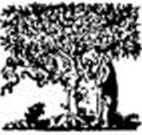3416400798

ELSEYIER
Int. J. Radiation Oncology Biol. Phys.. Vol 51. No. 5. pp. 1354-1360. 2001
Copyright 0 2001 Elsevier Science Inc. Printed in the USA. Ali rights rcscrvcd 0360-3016/0l/$-$ee front matter
Pil S0360-3016(01)02608-6
BIOLOGY CONTRIBUTION
CONSTITUTrVE NF-kB activity influences basal apoptosis and
RADIOSENSITIVITY OF HEAD-AND-NECK CARCINOMA CELL LINES
C. Didelot, M.Sc.,* M. Barberi-Heyob, Ph.D.,* A. Bianchi, M.Sc.,r P. Becuwe, Ph.D.,1 J.-F. Mirjolet, Ph.D.,*1 M. DAuęA, Ph.D./ and J.-L. Merlin, Pharm.D., Ph.D.*
♦Laboratoire dc Rcchcrchc en Oncologie, Ccntrc Alexis Vautrin, Nancy, France; Taboratoirc de Biologie Ccllulaire sur le Dćveloppcmcnt, Nancy. France; *IRIBHN, Universitć Librę dc Bmxcllcs, Brussels, Belgium
Purpose: Nuclear factor-KB (NF-kB) Has been implieated in anti-upoptotic gene transactivalion, according to its transcriptional activity. The present study was designed to investigate whether constitutive NF-kB activity could inodulate basal apoptosis and intrinsic radiosensitivity of KB head-and-ncck carcinoma celi linę and KB3 suhline. The KB3 suhline was morę radiosensitire (SF2 = 0.48, a = 0.064) than the radioresistant KB parental celi linę (SF2 = 0.80, a = 0.114).
Methods and Materials: Constitutive NF-kB DNA-hinding activity was dcterniined using electrophoretic mohil-ity shift assay. Modulation of NF-kB activity was performed by exposing hoth celi lines to tumor necrosis factor a or dexamethasone. Apoptotic celi population was analyzed using llow cytometry (annexin V/propidiuni iodidc). Radiosensitivity was assessed from determination of the surviving fraction at 2 Gy {SF2), and a and fi parameters were determined using the linear-quadratic model.
Results: Constitutive NF-kB activity was found to be significantly lower in KB3 than in KB. KB celi linę exposure to dexamethasone significantly decreased NF-kB DNA-binding activity and, consequently, enhanced baseline apoptosis and rudiosensitivity (a values: 0.114 vs. 0.052). ConvcrseIy, exposure of KB3 cells to tumor necrosis factor a inereased NF-kB DNA-binding activity and resulted in a significant decrease (50%) in ratę of apoptosis and in radiosensitivity (SF2 values: 0.48 vs. 0.63).
Conclusions: Modulation of NF-kB DNA-binding activity infiuences baseline apoptosis and intrinsic radiosen-sitivity. <P 2001 Rlsevier Science Inc.
NF-kB, Radiosensitivity, Basal apoptosis, Head-and-ncck carcinoma celi lines.
1NTRODUCTION
Cells submitted to ionizing radiation respond by activation of transcription factors such as AP1 or nuclear factor kB (NF-kB) (1-3); this leads to induction of specific genes and to protein synthesis (3), which could confcr radiation resis-tance. Then, a high constitutive level of NF-kB (4) might confer relatively high resistance to radiation therapy. To our knowledge, no study has expłained whether NF-kB activity could predict intrinsic radiosensitivity. However, Lezoualc’h et al. (5) have reported that the constitutive NF-kB DNA-binding activity of neuronal celi cultures is related to celi sensitivity to oxidative stress, which is known to be implieated in responsc to radiotherapy.
NF-kB is also known to be involved in molecular path-way of apoptosis (6, 7). In generał, activation of NF-kB has been reported to protect cells from apoptosis by inducing anti-apoptotic genes, such as TRAF, c-IAP, or P21 (6, 8-10). However, this was not always the casc, and cells from patients with ataxia tclangiectasia in which NF-kB activation was obscrvcd were reported to undergo apoptosis after being exposcd to radiation (11). Moreover, Ixvine et al. described that pretherapy apoptotic lcvel of patients with cervieal carcinoma was related to survival ratę after radiotherapy (12).
Activation and regulation of NF-kB are tightly controlled by IkB, a NF-kB cellular inhibitory protein. Normally, IkB binds to NF-kB, thereby preventing translocation of NF-kB into nucleus. Somc stimuli, including tumor necrosis factor alpha (TNFa) and ionizing radiation, rcsult in degradation and disappearance of IkB (13, 14). This process frees NF-kB for translocation to the nucleus and activation of its target genetic programs (15). Thus, NF-kB activation in-duces IkB expression. New synthesis of IkB causes reten-tion of NF-kB in the cytoplasm and attenuation of NF-kB-
Rcprint rcqucsts to: Muriel Barberi-Heyob, Ph.D., Laboratoire dc Rcchcrchc cn Oncologie, Centrę Alexis Vautrin, Avcnue dc Bourgognc, F-54511 Vandocuvrc-Lćs-Nancy Ccdcx, France. Tel: 33 3 83 59 83 06: Fax: 33 3 83 44 76 35: E-mail: m.barbcri@nancy fnclcc.fr
Prcscntcd in New Orlcans, LA, March 24-28, 2001 at the 92nd Annual Meeting of the American Association for Cancer Research in a poster discussion session (largets for modulation of radiation response).
This work was supported by the Ligue Nationale Contrę le Cancer des Comites Lorrains.
Receivcd Apr 30. 2001, and in revised form Aug 7, 2001. Acccplcd for publication Aug 10. 2001.
1354
Wyszukiwarka
Podobne podstrony:
1356 I. J. Radiation Oncology • Biology • Physłcs Volumc 51, Numbcr 5, 2001 Fig. 2. Analysis of comp
P-ISSN 2252-584x E-ISSN 2614-1531Jurnal SOLMA Vol. 07, No. 1, pp. 127-137; April 2018Pengelolaan dan
fC0NTENT8 DOKLAD¥-AKADEMI1 NAUK SSSR VOL 174, No. 1-6, May-.łune 1967Engl./Rusa. Infli.* of the S-Ra
1360 I. J. Radiation Oncology • Biology • Physics Table 1. Radiosensitivity paramc
skanuj0005 6 WAtt/A WAtt/A KARDIOLOGIA Vol 15 No 11-12 - zaostrzenie przewle
skanuj0007 6 KARDIOLOGIA Vol 15 No 11-12 Zawsze należy ustalić przyczynę częstoskurczów koinoro-wych
Vol.VI, No.l (2018) Interdisciplinary Journal of Engineering Sciences http://ijes.pwr.wroc.plBadania
The Bulletin of The Canadian Association of Physicists Vol. 34 No. 6 1978 Bulletin de I As
Vol. 104, No. 52 THISWEEK Whereconyougetthebestcup ofcoffee in Casey (ounty? Vote for that and
Medycyna Środowiskowa - Enyironmenlal Medieine 2014, Vol. 17, No. 3_9 Monika Rusin, Ewa Marchwińska-
10 Medycyna Środowiskowa - Environmental Medicine 2014, Vol. 17, No. 3 Monika Rusin, Ewa Marchwińska
Medycyna Środowiskowa - Enyironmenlal Medieine 2014, Vol. 17, No. 3_11_ Monika Rusin, Ewa Marchwińsk
12_Medycyna Środowiskowa - Enyironmental Medicine 2014, Vol. 17, No. 3 Monika Rusin, Ewa Marchwińska
więcej podobnych podstron